Summer season is here
With the weather getting warmer we are starting to see more cars with A/C issues. Here is a Peugeot RCZ […]
READ MORE -
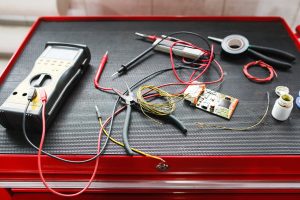 Electric Vehicle Servicing, Maintenance and Repair – A question we are getting asked more and more is…. Do Electric cars still need the same vehicle servicing, maintenance and repair as a regular petrol or diesel car? Well the answer is simple. Yes they do.
Electric Vehicle Servicing, Maintenance and Repair – A question we are getting asked more and more is…. Do Electric cars still need the same vehicle servicing, maintenance and repair as a regular petrol or diesel car? Well the answer is simple. Yes they do.
For many the worry is how to find the right trained mechanic to fix their car. It is fair to say most mechanics are trained to work with regular internal combustion engines, but don’t have the equipment or staff training to maintain and service electric vehicles. However, just like when you have auto electric faults with your current vehicle, the idea is to find a good auto electrician to deal with these issues. Most experienced car or vehicle electrics specialists will be routinely upskilled themselves in the new requirements and equipment needed to help you.
Again the anwer is simple…Yes they do.. Just like a regular vehicle, an electric car will need to go on for an MOT annually after it is 3 years old. The GOV.UK website can be a source of confusion for drivers as it lists ‘good vehicles powered by electricity’ under vehicles exempt from MOT – however, this does not cover electric cars. So make sure you keep a record or check with your local garage what you will need for your mot
Initially this is always hard to answer, because all vehicles are different and will vary in cost for their servicing and general maintenance. What I have noticed is that with electric motors, and their simplicity and overall low maintenance you could find yourselves with considerably lower maintenance costs saving you literally hundreds over the year.
At Widnes Auto Electrical, our auto electrician have received specialist training to work competently on electric vehicles – we also have all the necessary testing and safety equipment in-house to carry out servicing and repair on electric vehicles. To find out more about how we can help feel free to give us a call or call into our auto-electrical repair centre in Widnes
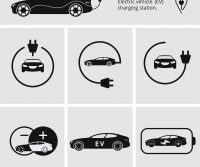
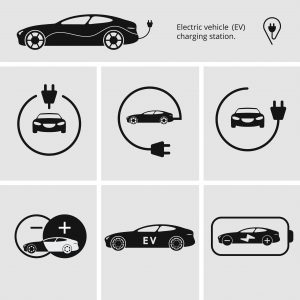 Are the combustion engines days numbered? Is this the beginning of the end for the diesel and petrol engine? Lets find out….
Are the combustion engines days numbered? Is this the beginning of the end for the diesel and petrol engine? Lets find out….
Significant gains in battery technology favour electric motors moving into the future. Current electric cars, powered by lithium-ion batteries, can reach ranges of almost of 300 miles on a single charge Tesla fans recently drove a Model S more than 700 miles in one go. Straight away this takes away the more recent questions and concerns around how far you can drive without needing to stop versus a diesel or petrol car.
Many thought leaders actually believe the “total cost of ownership” of an electric car will reach parity with a petrol one next year. Predictions are being made that electric vehicles will make up 14% of global car sales by 2025. Regulations are tightening, too. Last month the UK joined a lengthening list of electric-only countries, saying that all new cars must be zero-emission by 2050.
Electrification has thrown the car industry into potential chaos. Many leading brands are founded on their engineering heritage—especially in Germany. Compared with existing vehicles, electric cars are much simpler and have fewer parts; they are more like computers on wheels. That means they need fewer people to assemble them and fewer subsidiary systems from specialist suppliers.
While today’s carmakers grapple with their costly legacy of old factories and swollen workforces, new entrants will be unencumbered. Premium brands may be able to stand out through styling and handling, but low-margin, mass-market carmakers will have to compete chiefly on cost. Ultimately, what this means is, new competition in the industry from players such as Apple and Google will drive the cost down, and through innovation, the quality of Electric vehicles up.
Driverless electric cars in the 21st century are likely to improve the world in profound and unexpected ways, just as vehicles powered by internal combustion engines did in the 20th. But it will be a bumpy road. Buckle up. Follow our latest news to keep up with all the changes to the world of electric cars!
A lot of learners are caught out during the test, because they aren’t aware of the difference! Whats worse is that fact that you are probably reading this document because you have passed your test either recently or some time ago and despite being on the roads every day you no longer know what the rules are!
Thinking distance is the distance that the car travels after the driver has seen the danger and before the brakes are applied.
Some peoples reactions are faster than others, but the average distance it takes before the driver realises the danger ahead is 20 feet, when travelling at 20 mph.
The distance that the car travels whilst braking. With the brakes applied the car slows down, and the average car will travel 20 feet before coming to a complete stop, when travelling at 20 mph.
The Overall Stopping Distance is a combination of the 2 above.
When trying to visualise a distance it is useful to remember that the length of an average car is approximately 15ft, therefore, 75ft would be about 5 car lengths away.
The Overall stopping distance when travelling at 20mph is 40 feet (12 metres).
This is made up of: (thinking distance: 20 ft (6 m)) + (braking distance: 20 ft (6 m))
The Overall stopping distance when travelling at 30mph is 75 feet (23 metres).
This is made up of: (thinking distance: 30 ft (9 m)) + (braking distance: 45 ft (14 m))
The Overall stopping distance when travelling at 40mph is 120 feet (36 metres).
This is made up of: (thinking distance: 40 ft (12 m)) + (braking distance: 80 ft (24 m))
The Overall stopping distance when travelling at 50mph is 175 feet (53 metres).
This is made up of: (thinking distance: 50 ft (15 m)) + (braking distance: 125 ft (38 m))
The Overall stopping distance when travelling at 60mph is 240 feet (73 metres).
This is made up of: (thinking distance: 60 ft (18 m)) + (braking distance: 180 ft (55 m))
The Overall stopping distance when travelling at 70mph is 315 feet (96 metres).
This is made up of: (thinking distance: 70 ft (21 m)) + (braking distance: 245 ft (75 m))
Please note: Information is for guidance only – for up to date accurate information please check your highway code. Official guidelines can be found at https://www.gov.uk/guidance/the-highway-code/general-rules-techniques-and-advice-for-all-drivers-and-riders-103-to-158

 Are you looking forward to safeguarding your vehicle as well as your journeys? You can consider your desire as fulfilled because the most recent innovation which is a high-quality dash cam is just what you need. The initial footage ever recorded on a Dash-cam was in 1969 in Australia by a lady who was totally unaware she had discovered something which would be extremely important.
Are you looking forward to safeguarding your vehicle as well as your journeys? You can consider your desire as fulfilled because the most recent innovation which is a high-quality dash cam is just what you need. The initial footage ever recorded on a Dash-cam was in 1969 in Australia by a lady who was totally unaware she had discovered something which would be extremely important.
When making a decision to have a Dash-cam you may wonder why you should be spending additional money for the device or even be concerned about whether a single Dash-cam will be suitable for your needs. The choice is entirely yours because a single device would be logical but many are using additional devices to cover multiple viewpoints. For starters, you can consider having a dashboard Dash-cam because of the following reasons.
A Dash-cam offers you cover when driving especially against any challenges you may encounter. Insurance companies are demanding evidence of any incidents you may be involved in and footage from a Dash-cam is an appropriate solution.
Recording questionable driving to hand over to the police or even upload it to social media sites such as YouTube if you prefer.
Safeguarding your car in car parks. You do not have the freedom to believe everyone driving a vehicle is just as courteous as you are especially when parking or manoeuvring. Having a permanently installed hidden Dashcam will give you all the evidence you need to safeguard yourself.
It is a perfect tool which can act as evidence against vandalism regardless of whether it is your vehicle which is being vandalised or you are witnessing other vehicles facing similar encounters.
Car spotting. This is the perfect fit for you to get up to 4K car footage of all types including the Ferrari speeding past you or the latest Phantom 2018. A Dash-cam will capture all the footage leaving you ready to upload it to your Instagram or YouTube account.
Documenting your travels. You have a record in your possession which can be uploaded to your website or blog from the Dash-cam are simply maintain a record of your travels. You have an opportunity to capture the unknown because the footage you get is great and can always be uploaded to social media websites.
Recording business meetings. The sound option within the Dash-cam proves beneficial in such cases because you can transcribe the audio of your meeting at your leisure. It will even capture some light bulb moments if you come across them. Use your Dash-cam to watch for pets by safeguarding your own and everyone else’s from theft, injury and misadventure.
A Dash-cam is a perfect tool to capture a shot of nature such as a swooping owl or even recording your birdwatcher’s, The list of things you can do with a Dash-cam are endless and therefore you are suggested to have one installed in your car without further delay.

Most people think they need to check their car or motor vehicle in the winter or when its MOT or service is due. However, throughout the year, its important that you take care of your motor vehicle to ensure it remains in good working. This way your motor will remain safe, reliable and at is most fuel efficient on the road
Having said that, many car owners neglect their vehicle, and this can result in poor running performance and accidents. Fortunately, there are basic checks and maintenance tasks you can carry out to keep your motor vehicle at is best.
It is important that your car is running on a good set of tyres and this will make sure that the car is driving safely.
Every 2 to 4 weeks it’s a good idea to check tyre pressure and your tread. This will ensure you stay safe and inside the legal limits for driving.
Every month or so, you should check your engine oil as vehicles its not uncommon for cars to use up to a litre of oil every 1,000 miles. Do not wait until the warning light comes on as damage may have already occurred by then so check that you are always in between the minimum and maximum amount (overfilling can also cause damage).
Experts recommend that you check your water and coolant every couple of weeks ensuring your coolant is between the minimum and maximum amount. You should always do this when the engine is cool. If you think its unusually low this could be a sign of a leak. Take it to your nearest garage
Lights
It’s worth checking your lights are in good working order at least every week or 2. You will usually find if you are driving a modern vehicle then you will just need to check your onboard computer. A warning light will normally appear. If not, check manually by cleaning any dirt of and make sure they are bright and clear on the road.
This is one of the simplest things to do. Simply keep an eye out for any damage such as cracks or chips. There have been numerous occasions in the past were people have simply not bothered to repair them and the chip has led to the windscreen smashing and causing accidents. Often your insurance will fix these for you without you losing any no claims either!
The wipers should always be cleaned whenever you clean your car to prevent smearing. Many motorists like to replace their wipers once a year and this is a good practice as they are cheap and easy to replace.
Screen wash
With the warm summer weather on the way, it becomes breeding season for the bugs and flies that love to hit your windscreen on those country roads. Before you know you will run out of screen wash from constantly clearing away the bugs.
As such, check and top up your screenwash on a weekly basis as it is required by law to work properly. It is particularly important to check on a regular basis if you drive in muddy conditions or if you are about to set off for a long drive.
Once a year you should take a look at the toolkit/emergency kit that you have to make sure that you have everything you need. Ideally this should include a spare wheel, locking wheel nut, a jack, water, food, warm clothing, a blanket etc.
Check that all of the electric work in the car on a weekly basis. This can be easy enough to do whilst you are driving or simply when you are parked – any problems should be fixed as soon as possible. Bring it in to Widnes Auto Electrical if you have any concerns
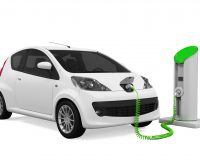
 What do you get it you cross an Electric car with a Kettle? You might ask yourself why on earth is a car electrics specialist in Widnes writing an article about crossing an electric car with boiling a Kettle ? Strange you might ask. However, I thought it might be useful for you all to know that, according to the National grid, attempting to boil a kettle whilst charging your electric can could actually blow your fuse!
What do you get it you cross an Electric car with a Kettle? You might ask yourself why on earth is a car electrics specialist in Widnes writing an article about crossing an electric car with boiling a Kettle ? Strange you might ask. However, I thought it might be useful for you all to know that, according to the National grid, attempting to boil a kettle whilst charging your electric can could actually blow your fuse!
A “thought piece” document obtained by the Financial Times – Source – Telegraph warned that if you used household items such as kettles or even electric ovens at the same time as charging your electric car battery would blow the fuse.
“If one were to use an above average power charger, say 11kW, this would require 48 amps. When using such a charger it would mean that you could not use other high demand electrical items… without tripping the house’s main fuse.”
What makes this particularly interesting is that this comes just weeks after the Government announced plans to ban the sale of new diesel and petrol cars by 2040 in a bid to encourage people to buy electric vehicles.
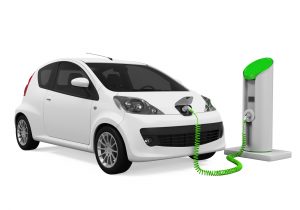 It suggests that the ability to travel longer distances without stopping to recharge will be a “must have” if motorists are to abandon petrol or diesel cars. In order to do this electric cars may well need more and more powerful batteries which, when charging will continue to effect your daily appliance usage.
It suggests that the ability to travel longer distances without stopping to recharge will be a “must have” if motorists are to abandon petrol or diesel cars. In order to do this electric cars may well need more and more powerful batteries which, when charging will continue to effect your daily appliance usage.
So what are the possible solutions? 2 most popular trending suggestions are to build several thousand “super fast” charging forecourts — similar to modern day petrol stations — or “large scale rebuild of the domestic electricity infrastructure” by fitting homes with the maximum 100 amp main fuse. Not sure which is the better option as yet. My thoughts would be that we would all prefer the convenience of charging our cars whilst at home. But the question remains, will we be ready for the next step in the automotive industry.